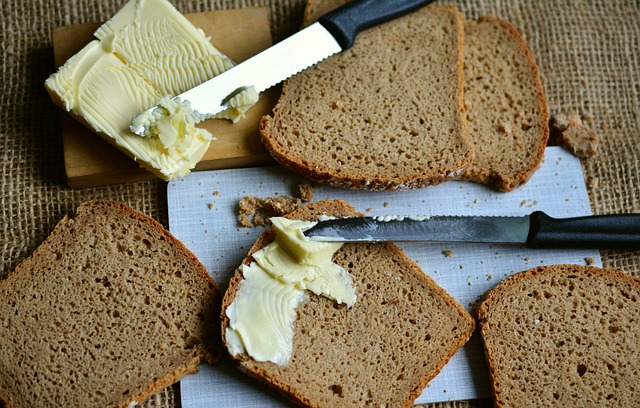Understanding fat composition and metabolism is key to effective Fat Reduction Solutions. Different types of fats have unique properties and burn at varying rates, requiring tailored strategies. Exercise, specifically high-intensity workouts and strength training, combined with balanced nutrition rich in whole grains, lean proteins, and healthy fats, are crucial. Intermittent fasting and non-invasive treatments like CoolSculpting offer alternative Fat Reduction Solutions. For severe obesity, surgical options like liposuction or gastric bypass provide rapid results but require lifelong commitment.
Looking for effective fat reduction solutions? This comprehensive guide explores a multi-faceted approach to achieving your goals. From understanding fat composition and metabolism to lifestyle modifications, diet strategies, exercise techniques, and even advanced treatments like intermittent fasting and body contouring, we provide insights into every angle of successful fat loss. Discover how to make sustainable changes for lasting results.
Understanding Fat Composition and Metabolism

Understanding fat composition and metabolism is crucial when seeking effective fat reduction solutions. Different types of fats, such as subcutaneous, visceral, and intramuscular fat, have distinct characteristics and metabolic rates. Subcutaneous fat lies just beneath the skin and is relatively easy to target through exercise and diet. Visceral fat, on the other hand, surrounds internal organs and is more challenging to eliminate but poses significant health risks if left unchecked. Intramuscular fat is stored within muscle cells and can be reduced through intense strength training.
Metabolism plays a pivotal role in fat reduction as it determines how quickly your body burns calories. Factors like age, gender, genetics, and hormone levels influence metabolic rate. To enhance metabolism for fat loss, focus on high-intensity workouts, incorporate lean proteins and complex carbohydrates into your diet, and ensure adequate sleep. By understanding these nuances of fat composition and metabolism, individuals can tailor their fitness and dietary strategies to achieve more effective fat reduction outcomes.
Lifestyle Modifications for Sustainable Fat Loss

Adopting a healthy lifestyle is key when seeking long-term fat reduction solutions. This involves making significant changes to your daily habits and routines. One of the most effective strategies is incorporating regular physical activity into your schedule. Aim for a mix of cardiovascular exercises, like brisk walking or cycling, and strength training to build muscle mass. These activities not only burn calories but also boost metabolism, aiding in fat loss.
Additionally, focusing on dietary adjustments is vital. Emphasize a balanced diet rich in whole grains, lean proteins, healthy fats, and plenty of fruits and vegetables. Reduce the intake of processed foods, sugary beverages, and high-calorie snacks. Remember, sustainable weight loss is about creating a calorie deficit while ensuring your body receives all the necessary nutrients.
Role of Diet in Effective Fat Reduction

The role of diet cannot be overstated when it comes to effective fat reduction. Adopting a balanced and calorie-controlled eating plan is one of the most powerful tools at your disposal. Fat reduction solutions often begin with understanding portion sizes and choosing nutrient-dense foods that support weight loss goals. Incorporating more whole grains, lean proteins, and healthy fats while reducing processed foods and added sugars can significantly impact overall health and fat loss.
A well-planned diet provides the body with the essential nutrients it needs to function optimally, while also helping to manage hunger cravings and maintain energy levels throughout the day. By focusing on long-term dietary changes rather than quick fixes, individuals can achieve sustainable fat reduction and improve their overall quality of life.
Exercise and Cardiovascular Training Strategies

Exercise and cardiovascular training are pivotal components in any fat reduction solutions regimen. High-intensity interval training (HIIT), for instance, has proven to be highly effective in boosting metabolism and burning calories efficiently. By alternating between short bursts of intense exercise and periods of active rest, HIIT challenges your body to utilize stored fat as fuel.
Additionally, consistent cardiovascular workouts such as running, cycling, or swimming help to burn excess fat and improve cardiovascular health. Aim for at least 150 minutes of moderate-intensity cardio or 75 minutes of vigorous-intensity cardio each week. Incorporating these strategies into your routine can significantly contribute to achieving your fat reduction goals, fostering a healthier and more active lifestyle.
Strength Training for Burning More Calories

Incorporating strength training into your fitness routine is a powerful strategy for effective fat reduction solutions. Unlike cardio exercises that focus on burning calories during the activity, strength training works to increase muscle mass. Muscles are metabolically active tissues that continue to burn calories even at rest, known as the resting metabolic rate (RMR). By building lean muscle through resistance exercises like weightlifting or bodyweight workouts, you can elevate your RMR, allowing your body to efficiently burn more calories throughout the day.
This process is particularly beneficial for long-term fat loss because it encourages a higher calorie expenditure over time. Unlike fad diets that may yield quick results but are often unsustainable, building muscle through strength training promotes a healthy, efficient metabolism that supports weight management in the long run. It’s a game-changer when combined with balanced nutrition and consistent cardiovascular exercise.
Exploring Intermittent Fasting Techniques

Intermittent fasting is gaining popularity as a potent fat reduction solution, offering an alternative approach to traditional dieting methods. This eating pattern involves cycling between periods of eating and fasting, rather than focusing solely on what foods are consumed. There are various techniques to explore, such as the 16/8 method, where you fast for 16 hours and eat during an 8-hour window, or the more extreme 5:2 diet, which involves normal eating for five days and restricting calories for two non-consecutive days.
These methods can help regulate insulin levels, promote weight loss, and improve overall metabolic health. By giving your body a break from constant feeding, you allow it to tap into stored fat for energy, leading to a more efficient fat reduction process. Intermittent fasting is not just about what foods you eat but also when you eat them, making it a flexible and potentially sustainable strategy for those looking to shed excess pounds and improve their overall health.
Non-Invasive Body Contouring Treatments

Non-invasive body contouring treatments have emerged as popular fat reduction solutions for those seeking to sculpt and tone their figures without incisions or recovery time. These advanced technologies offer targeted approaches to eliminating stubborn fat deposits, providing significant results in relatively short treatment sessions. One of the most well-known methods is CoolSculpting, which uses cryolipolysis to freeze and eliminate fat cells, leading to a slimmer appearance. Another innovative option is RF (Radio Frequency) body contouring, where focused energy waves are used to tighten skin and reduce fat.
These non-invasive treatments appeal to individuals who prefer a more gentle approach to fat reduction, avoiding the risks and downtime associated with surgical procedures. They offer flexibility in terms of treatment areas, allowing for custom plans tailored to each patient’s goals. Moreover, as technology advances, these methods continue to improve, delivering safer, more effective fat reduction solutions while maintaining patient comfort and satisfaction.
Surgical Options for Severe Cases: A Last Resort

In severe cases where significant fat accumulation poses health risks or severely impacts an individual’s quality of life, surgical options emerge as a last resort for effective fat reduction. Procedures like liposuction, which physically removes fat cells from targeted areas, and gastric bypass surgery, that alters digestion to reduce calorie intake, offer definitive solutions for extreme obesity. These interventions are typically considered after non-surgical methods have been explored and exhausted, ensuring patients fully comprehend the risks, benefits, and long-term implications involved.
While surgical fat reduction provides rapid and significant results, it’s not without considerations. Potential complications, downtime required for recovery, and lifelong dietary and lifestyle adjustments needed to maintain results underscore the importance of thorough pre-operative evaluations and post-operative support. As such, individuals considering these options must be prepared to commit to a holistic approach to health and wellness.
